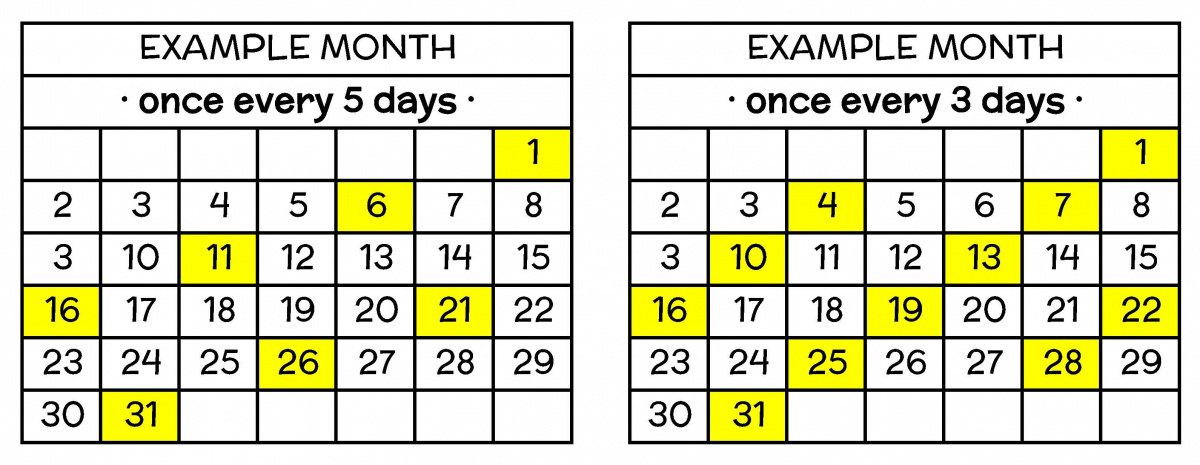Restrictions & Guidelines

Restrictions
Utah is the 2nd driest state in the nation, and it is critical to conserve water every year, drought or not. Our Board of Trustees passed Resolution 2021-06 in order to solidify the District's commitment to making water conservation a priority. The intent of the Board is not to penalize water users who have been found in violation of the regulations; rather, we hope to work with and educate our customers on the rules of the District in order to spread awareness of the best practices for our desert environment. There are still some people new to our community who do not understand or realize the restrictions in place, so we can all help by spreading the word!


This is a general guideline for watering. If your landscape does well with less water, please cut back where you can!
This practice minimizes evaporation and allows your landscape to receive the full benefit of the water you put down.
Aside from the fact that it is unnecessary to water your lawn every day, allowing your lawn to dry out between watering creates deeper roots, a drought-tolerant lawn, and allows you to water deeper and less often.
Watering full cycles multiple times in a given day encourages a shallow root system, which makes your lawn much less drought-tolerant, and is unnecessary. If you leave footprints on the grass, it is usually time to water; however, it is very easy to test your soil moisture with a soil probe or screwdriver before you water. If the soil is moist, DON'T WATER!
However, the "cycle & soak" method is allowed - set each zone for 1/2 the time needed, run all the zones, then run each station a second time during the same watering cycle to minimize water runoff. This does NOT mean you can water the first half in the morning and the second half in the evening or on consecutive days - as a general rule, 30-60 minutes is all you need to wait between cycles. Cycle & soak not only eliminates runoff, it provides more water to the roots. The first cycle will break the surface tension of the soil and allow the water to penetrate. The second cycle is absorbed even further into the soil, reaching the roots. This method works well on sloped areas or in clay soil.
We recommend running pop-up or fixed sprinklers for 15-25 minutes per station and rotating or Rain Bird sprinklers for 25-45 minutes per station (depending on soil type; see guide above). Set a timer when you water with a hose to avoid letting the water run excessively.
Visually inspect your sprinkler system once a month during daylight hours. Check and fix any tilted, clogged, or broken heads. Also check your sprinkler valves. Although watering during the day is not allowed, we understand that you won't notice problems with your system unless you see it in operation.
Be aware of what is happening in your system. Notify your neighbors if you see they have broken sprinkler heads or lines that are sending large amounts of water down the gutter. Excess water running into the storm drain is NOT recaptured into the system. It is your responsibility to keep your water on your own property.
Using secondary water to rinse down driveways and sidewalks is NOT ALLOWED - use a broom instead. Please adjust sprinkler heads to minimize the amount of water hitting hard-surface areas as much as possible.
